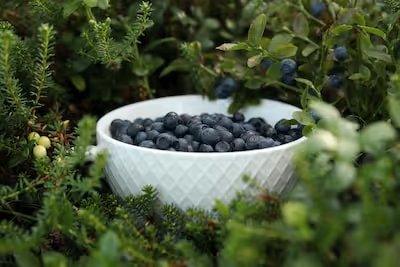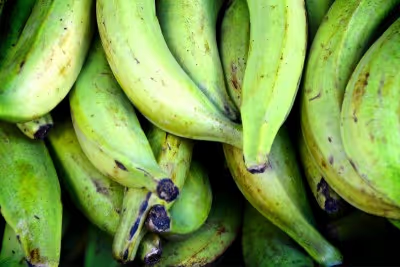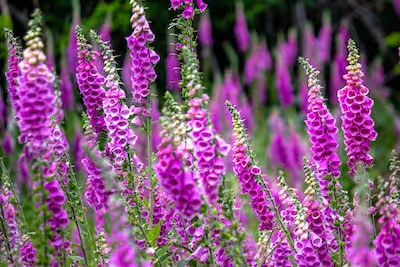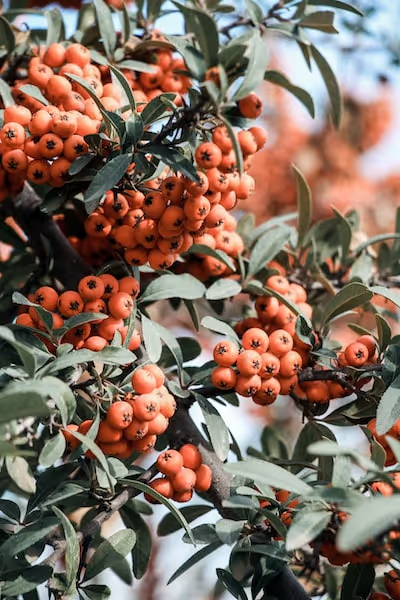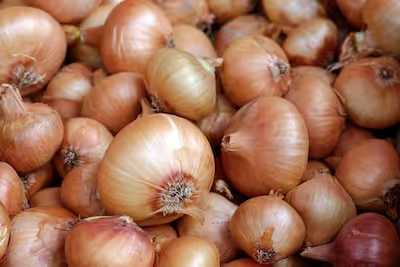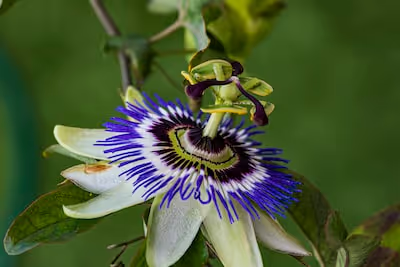Growing Chinese Flowering Leek: A Simple Gardener's Guide
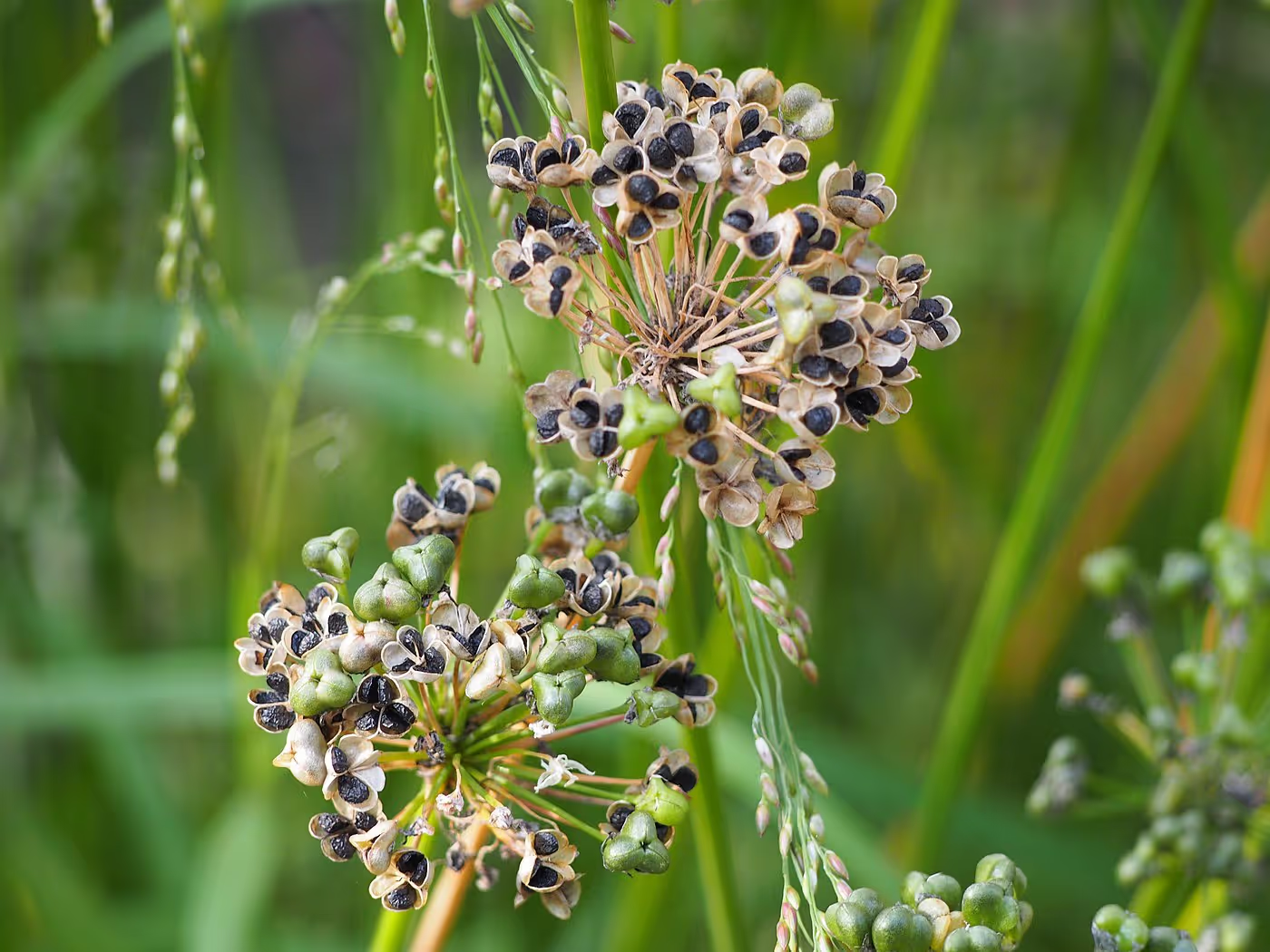
Growing Chinese Flowering Leek
Growing Chinese Flowering Leek rewards gardeners with vibrant blooms and rich, garlic-infused flavors. Sow seeds directly in fertile, well-drained soil under full sun, spacing rows about 12 inches apart. Water consistently and harvest tender flower stalks early to encourage vigorous regrowth—keep reading to discover exactly how this flavorful perennial can transform both your garden and your kitchen.
Cheatsheet: Mastering Chinese Flowering Leek Success
🌱 Quick Start
- Perennial herb, mild garlic flavor
- Harvest in 60-80 days (first cut)
- High in vitamin C, A, calcium; boosts immune health
🛒 Tools and Products You'll Need
- Chinese leek seeds or starter plants
- Garden fork or trowel
- Compost or balanced fertilizer
- Sharp scissors or harvest knife
- Mulch (straw or leaves)
☀️ Planting Guide
- Sow after last frost, soil temp: 60-75°F (15-24°C)
- Full sun, well-drained soil, pH 6.0-7.0
- Seed depth: 1/4 inch (0.6 cm)
- Space: 6 inches (15 cm) apart
💧 Water & Care
- Keep evenly moist—avoid soggy roots
- Mulch to retain moisture & suppress weeds
- Feed with organic fertilizer once per month
- Remove flower stalks for leafy harvests
✂️ Harvest
- First cut: when leaves reach 12 in (30 cm)
- Cut 1 in (2.5 cm) above soil—re-grows for years
- Best yield: 3-4 harvests per season
🍽️ Use & Storage
- Stir-fries, dumplings, omelets
- Store: refrigerate up to 1 week
- Freeze chopped leaves for year-round use
- Prepare sunny, well-drained bed with compost.
- Sow seeds 1/4 in (0.6 cm) deep, 6 in (15 cm) apart.
- Water regularly; keep soil moist but not soggy.
- Fertilize monthly; mulch to conserve moisture.
- Cut leaves for harvest when 12 in (30 cm) tall.
- Repeat harvest through the season.
-
Growing Chinese Flowering Leek: the plant that pays rent
I grow Growing Chinese Flowering Leek for its flat garlic-scented leaves, sweet scapes, and pollinator-magnet umbels that look like fireworks over a tidy clump. It takes little space, feeds all season, and shrugs at late frost.
Botanical quick-take
Allium tuberosum goes by Chinese flowering leek, garlic chives, or nira, and it is a long-lived perennial. It spreads slowly by short rhizomes and by seed if you let heads ripen.
"Hardy in USDA Zones 4 to 9." — Missouri Botanical Garden Plant Finder
Leaves taste like mild garlic, while unopened flower buds cook like baby leeks. I treat it as a cut-and-come-again herb and a vegetable.
Site and soil
Give it 6 to 8 hours of sun and fertile, well drained loam with a pH around 6.2 to 7.2. Heavy clay grows it fine if you raise the bed and add compost.
I shoot for 1 inch of water per week, about 25 mm, more in heat waves. Mulch 2 inches, 5 cm, to keep roots cool and the stand clean.
Sowing and transplanting
Sow seed 1 to 2 months before last frost, 1 quarter inch deep, 6 mm, at 68 to 75 F, 20 to 24 C. Germination runs 10 to 14 days in my shop-light setup.
"Spring and fall sowings both perform, with indoor starts at 70 F giving the quickest takes." — common seedhouse guidance
Transplant after hard frost risk, spacing clumps 6 to 8 inches, 15 to 20 cm. Direct seeding works, though I prefer plugs to keep rows tidy and weeding easy.
Spacing that prevents headaches
Set rows 12 inches, 30 cm, apart for blade access. In containers, one 12 inch, 30 cm, pot per clump gives years of harvests.
Cramped plants get thrippy and sulk in midsummer. I learned that the hard way in a cramped herb wheel that turned into a bug buffet.
Feeding the stand
Work in 1 inch, 2 to 3 cm, of finished compost at planting. Side-dress with another half inch midseason if leaves pale.
I go light on nitrogen, aiming for steady growth and concentrated flavor. Fish emulsion at half strength perks it up after hard cuts.
Water, heat, and wind
Keep soil evenly moist while establishing, then let the top inch dry between waterings. In heat above 90 F, 32 C, I deep-water early morning and again lightly at dusk during heat spikes.
Wind tatter leaves, so a low mesh or an herb neighbor breaks gusts without shading. This keeps scapes straight and market-pretty.
Blanching for yellow chives, the restaurant trick
For tender, pale leaves, cut the clump to 1 inch, 2.5 cm, then cover with a tall, opaque pot or crate for 10 to 14 days. No light means sweet, buttery blades that wok like a dream.
I rotate blanching around the bed, so one patch rests while the next feeds me. It feels like running a mini dim sum line in the backyard.
Harvest calendar
Start cutting leaves 60 to 80 days from sowing, then every 3 to 4 weeks. Leave 1.5 inches, 4 cm, of leaf base so crowns rebound fast.
Scapes arrive year two, usually mid to late summer. Pick tight buds for stir-fry, and leave a few to bloom for bees if you can spare them.
Flower control and reseeding
If you do not want volunteers, deadhead before seed turns black and shiny. I hand-strip whole umbels into a bucket for a tidy cleanup.
Saving seed is easy, though strain purity drifts if neighbors grow other alliums. Dry in a paper bag, label, and use within 2 or 3 seasons for best vigor.
Pests and diseases, kept honest
Allium leaf miner, onion thrips, and the occasional rust spot show up where I garden. Good airflow and row cover take care of most grief.
"Two generations per year, spring and fall, with adults laying eggs on Allium leaves." — Penn State Extension on Allium leaf miner
Use fine mesh covers at first spring flight and again in fall, 0.8 mm works. Yellow sticky cards on the windward edge give me early warning.
Thrips leave silvery streaks and black specks. A hard water spray, then a neem rotation at dusk, clears mild cases without wrecking predators.
Rust and Botrytis ride on wet foliage. Water the soil, not the leaves, and thin clumps every 3 years to keep crowns breathing.
Perennial care and winter tactics
In cold zones, mulch 2 to 3 inches, 5 to 8 cm, after the ground cools. I cut the stand low after the first hard freeze and let mulch protect the crowns.
To force winter greens, pot up divisions in fall, chill 3 to 5 weeks at 35 to 45 F, 2 to 7 C, then grow under lights for leaf cuts every 2 weeks. It beats buying tired bunches in January.
Division and longevity
Divide clumps every 3 to 4 years, preferably in early spring as growth starts. I slice like a pie into 6 to 8 wedges with a soil knife, then replant at proper spacing.
Old, woody centers revive after division, and weeds lose their grip. Flavor snaps back, and yields jump.
Best uses in the kitchen, the grower’s angle
Leaves cut into dumpling filling, scrambled eggs, and chilled noodles. Scapes hit the wok first, leaves go in last, and both love a kiss of sesame oil.
Flower buds tempura nicely. Open blooms garnish salads and attract a small cloud of native bees while you pick.
Variety traits and buying guide
Seed packets often read simply Garlic Chives or Chinese Leek, yet traits vary. I look for three signals on the label.
- Broadleaf types for thick, flat blades and bigger bunches.
- Slow-bolt lines for hot summers, useful in zones with long heat spells.
- Selected scape lines for fat, uniform flower stems that sell in bunches.
Reliable seed houses that stock Allium tuberosum most seasons include Johnny’s, Kitazawa, Baker Creek, Fedco, West Coast Seeds, and True Leaf Market. For crowns or starts, herb nurseries and Asian vegetable specialists ship in spring.
Tools and supplies I actually use
- Soil knife for division, sturdy enough to slice dense crowns.
- Fine mesh row cover and hoops for Allium leaf miner and thrips exclusion.
- 48-cell plug trays for tidy transplants, plus a heat mat for even germination.
- Mulch, I favor shredded leaves, which sift around clumps without matting.
Companions and bed mates
I plant beside peppers, eggplant, and carrots, where scent seems to confuse nibblers. Avoid close rotation with onions or garlic if you fight soil diseases.
Let a few plants bloom near cucumbers and squash. The umbels pull in syrphid flies and tiny wasps that patrol aphids like bouncers.
Common mistakes to skip
- Crowding plants, which invites thrips and stunts leaves.
- Cutting to the crown, which slows regrowth, always leave a stub.
- Overwatering in cool spells, which leads to rot, water deeply, then wait.
- Letting every umbel seed, unless you want a leek lawn.
- Feeding heavy late season, which pumps soft growth before frost.
Comparisons and smart alternatives
- Chinese flowering leek vs common chives, bolder garlic flavor, flatter leaves, longer cooking window.
- Chinese flowering leek vs scallions, scallions make bulbs or shanks, garlic chives give leaves and scapes from the same spot for years.
- Chinese flowering leek vs garlic scapes, garlic scapes are seasonal and brief, flowering leek scapes come steadily and regrow.
- Curious cousin, Allium ramosum Siberian chives, similar habit with cold snap toughness.
Season plan by climate, quick sketch
- Cold zones 4 to 5, start indoors late winter, set out late spring, mulch heavy for winter and divide in spring of year three.
- Zones 6 to 7, spring and fall sowings both thrive, protect fall regrowth with row cover to extend leaf cuts.
- Zones 8 to 9, give afternoon shade in peak heat, lean on fall sowings for lush winter cuts.
Evidence and references I trust
Missouri Botanical Garden lists Allium tuberosum as hardy in USDA Zones 4 to 9, which matches my long-term beds. Penn State Extension documents two flights per year of Allium leaf miner, a scheduling anchor for row cover timing.
"Floating row covers placed before adult activity prevent egg laying on Allium crops." — Extension guidance echoed by Penn State and Cornell
RHS cultural notes align with my practice, full sun and fertile, well drained soil. Seedhouse data on 10 to 14 day germination at around 70 F, 21 C, track with my flats under lights.
Growing Chinese Flowering Leek, the weekly rhythm
Water deep once, spot-weed, and harvest clean with a sharp knife. Feed lightly, deadhead what you do not need, and split clumps before they boss you around.
Do that, and Growing Chinese Flowering Leek becomes a steady habit, not a project. The plant pays you back in stir-fries, dumplings, and bees at breakfast time.
Frequently Asked Questions about Growing Chinese Flowering Leek
What soil conditions encourage optimal growth?
Chinese Flowering Leek thrives in fertile, well-draining soil rich in organic matter. Incorporate compost or aged manure into the planting area to improve nutrient content and drainage.
How much sunlight do these plants require?
Plant your Chinese Flowering Leek where it receives full sun, at least 6-8 hours daily, to ensure vigorous growth and abundant blooms.
What watering schedule promotes healthy development?
Water the plants consistently, maintaining moist but not waterlogged soil. Regular watering once or twice a week, providing about 1 inch (2.5 cm) of water weekly, encourages healthy foliage and flowering.
When is the ideal planting time for optimal results?
Plant seeds or transplants outdoors once soil temperatures consistently reach around 60-70°F (16-21°C). Early spring planting offers ample time for robust plant establishment.
What spacing recommendations encourage healthy plant growth?
Space your Chinese Flowering Leek approximately 6-8 inches (15-20 cm) apart to allow sufficient airflow, reducing disease risks and promoting vigorous growth.
How can I protect these plants from pests and diseases?
Regularly inspect your plants for signs of aphids, thrips, or fungal infections. To reduce disease occurrence, practice proper crop rotation and avoid overhead watering. For pest control, consider organic methods like neem oil applications.
How and when should I harvest for best results?
Harvest flower stalks when buds have formed but before blooms fully open, typically 60-70 days after planting. Cut stalks near the base using clean, sharp shears, which encourages additional growth and flowering.
Can these plants survive cold winters?
Chinese Flowering Leek tolerates moderate cold but benefits from winter protection in colder climates. Mulch heavily around the base of plants to insulate roots against freezing temperatures below 20°F (-7°C).
Growing Chinese Flowering Leek is straightforward, but it rewards patience and a good eye for timing. Give these perennial alliums well-drained soil, steady moisture, and sunlight, and they’ll return year after year, offering up tender green shoots and delicate blooms. Remember to harvest young leaves for the best flavor, and don’t be shy about dividing crowded clumps every few seasons—they thrive on a little tough love. If you’re already tending chives or leeks, you’ll find the rhythm familiar. In the kitchen, few plants match their savory punch. Growing Chinese Flowering Leek is less about fuss and more about letting the plant do what it does best—grow, multiply, and flavor your meals for years to come.
The Homesteader's Guide to Chinese Flowering Leek: Sustainable, Nutritious Harvests at Home
Boosting Self-Sufficiency with Seed Saving
Allow plants selected for seed production to fully flower. Harvest seed heads once flowers dry, turning from green to brown. Store seeds in paper envelopes in cool, dry places; viable up to 3 years.
Natural Pest Management Methods
- Interplant Chinese flowering leek with carrots or tomatoes to repel aphids and carrot flies.
- Spray diluted neem oil solution (2 tbsp neem oil per gallon/3.8 liters water) to control thrips and leaf miners.
- Encourage ladybugs and lacewings in garden habitats to consume aphids.
Optimizing Yields with Succession Planting
Plant small batches at 3-week intervals from spring to midsummer to provide continuous harvests and prevent bolting under heat stress.
Maximizing Nutritional Benefits
Chinese flowering leek provides high levels of vitamin C, vitamin K, and antioxidants, boosting immune function and supporting bone health. Harvest fresh, consuming within 2 days to retain nutritional value.
Composting for Richer Soil
Add nitrogen-rich, chopped Chinese flowering leek scraps to compost piles, promoting faster decomposition and creating fertile, organic amendments for next season's planting beds.
Find out which plants will thrive in your garden!
Answer a few fun questions and get custom plant recommendations perfect for your space. Let’s grow something amazing together!

start your season
